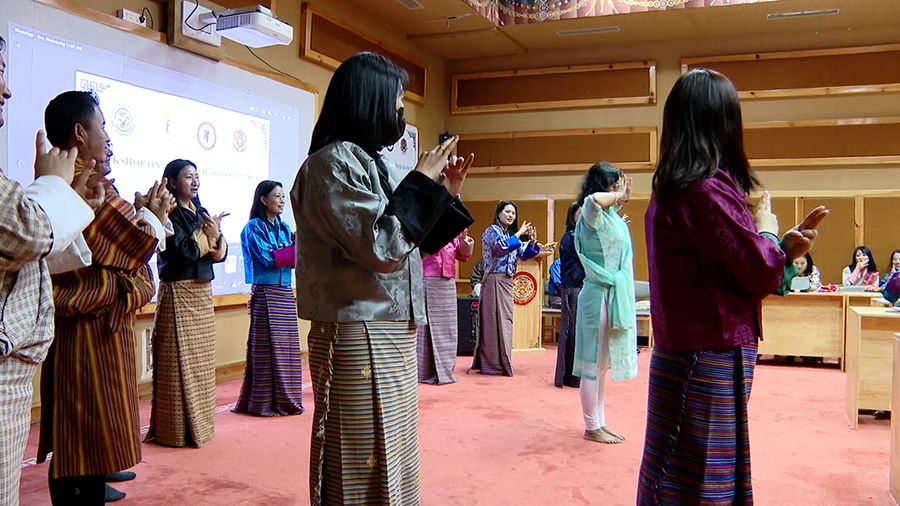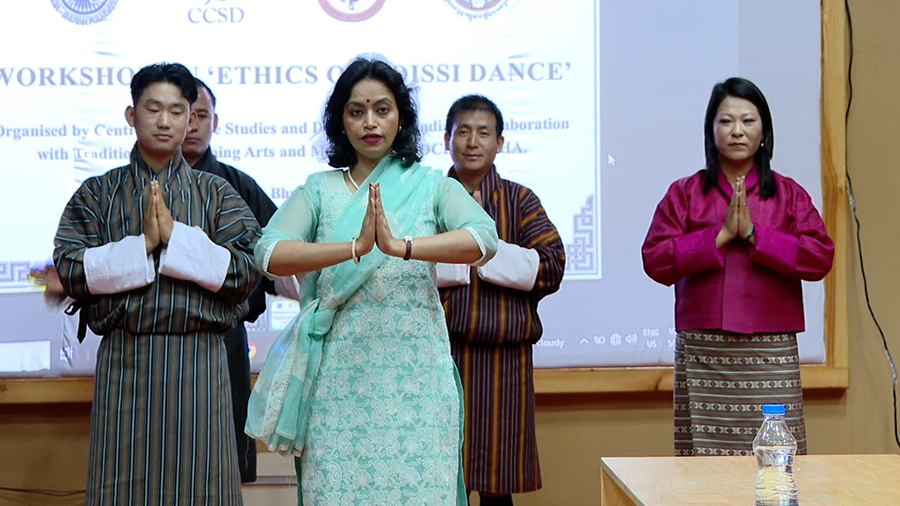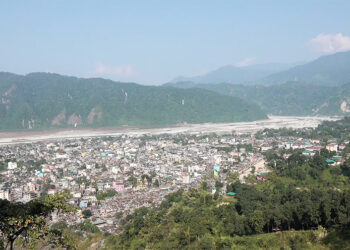 Odissi, one of India’s oldest classical dance forms, found an unlikely but warm home in Thimphu this week. Over 50 folk dancers from the Traditional Performing Arts and Music Division immersed themselves in the “Ethics of Odissi Dance”, a four-day workshop that concluded today with a fusion of Odissi steps performed to a Bhutanese flute melody.
Odissi, one of India’s oldest classical dance forms, found an unlikely but warm home in Thimphu this week. Over 50 folk dancers from the Traditional Performing Arts and Music Division immersed themselves in the “Ethics of Odissi Dance”, a four-day workshop that concluded today with a fusion of Odissi steps performed to a Bhutanese flute melody.
 The workshop, which began on Tuesday, was led by two experts from India’s Centre for Cultural Studies and Development. The experts focused not only on dance movements but also on the moral philosophy behind the ancient art form.
The workshop, which began on Tuesday, was led by two experts from India’s Centre for Cultural Studies and Development. The experts focused not only on dance movements but also on the moral philosophy behind the ancient art form.
“Bhutan, as we know, has similar devotional dances such as the mask dances, which are all very much devotional forms of dance, like the folk dances of Bhutan. Similarly, in the case of Odissi dance, I found that the hand gestures are very similar,” said Paulami Guha, Member Secretary, Centre for Cultural Studies and Development, India.
Over the four days, participants were introduced to foundational Odissi movements, the importance of body and posture, and the storytelling tradition embedded in the dance.
For many participants, this was their first experience learning an Indian classical dance.
“What I learned from this four-day workshop is that no matter which country a song or piece of music comes from, what truly matters is how hand gestures, dance steps, and movements can be integrated and infused into the melody,” said Yeshey Lhamo, a participant from Traditional Performing Arts and Music Division.
“Before performing Odissi dance, a warm-up exercise is done, which is a very good practice. In our country, we usually start dancing directly after reaching the venue. I believe that if we also include warm-up exercises in our routine, it would be very beneficial,” said Phub Wangmo, another participant.
The highlight of the day was a fusion performance showcasing Odissi steps to a Bhutanese flute melody.
Officials from the Traditional Performing Arts and Music Division said that integrating Odissi steps into Bhutanese dance is a gesture that symbolises harmony and cultural exchange between the two countries.
The workshop was organised by India’s Centre for Culture Studies and Development in collaboration with the Traditional Performing Arts and Music Division and supported by the Indo-Bhutan Foundation.
With every Odissi hand gesture attuned to the melody of Bhutanese flute music, the dance symbolises the cohesion beyond mere dance and music, but the deeper, friendly relations between neighbours, Bhutan and India.
Kinley Bidha
Edited by Kipchu








